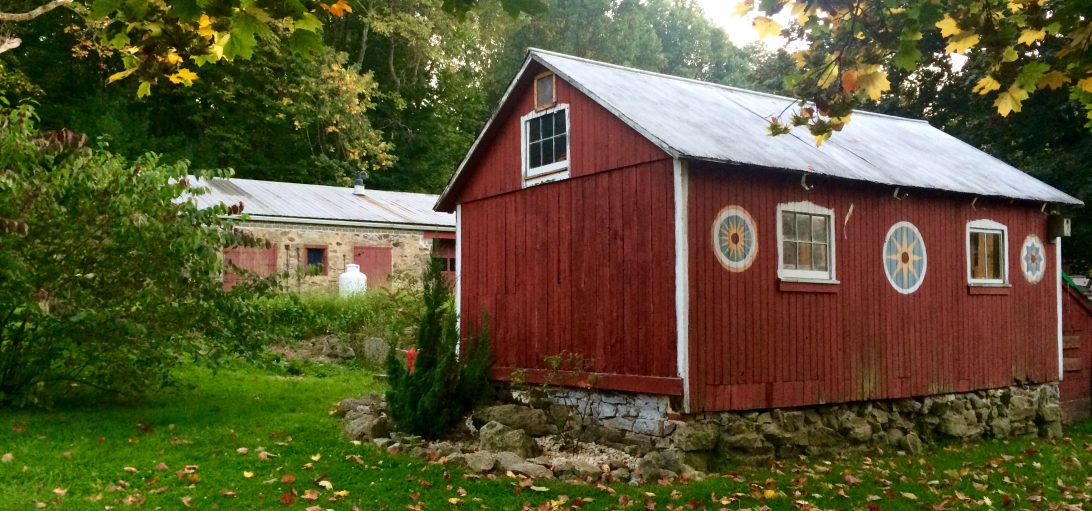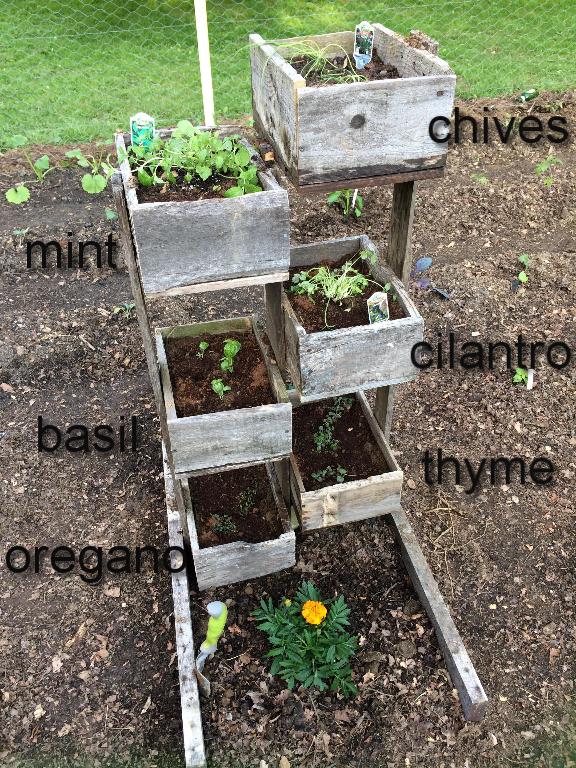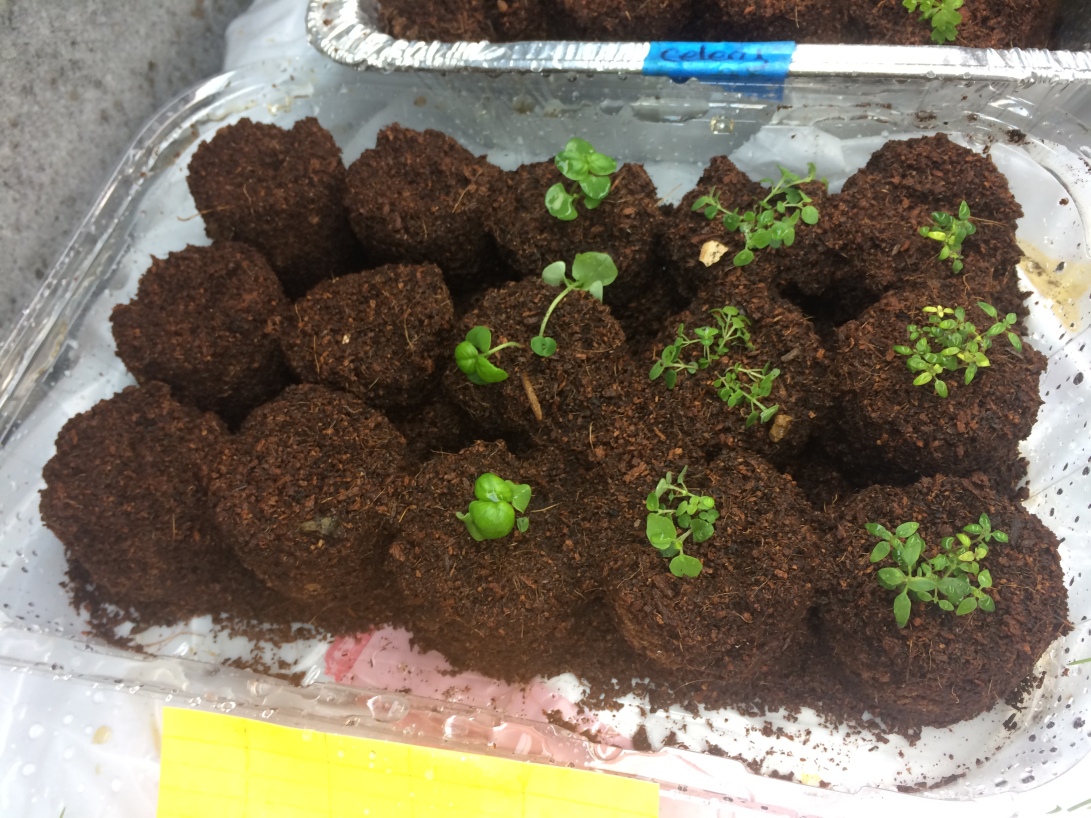The Handyman and I both knew that the first year of our homestead plan would be a learning experience. Of course, I was secretly hoping that we would learn that we did everything perfectly, but no. We are learning the much more realistic “hard way”. As painful as it is to admit mistakes, I think it’s more painful to repeat them, so we are going to take a very hard look at what worked and what didn’t.
First, we will probably not start our own spring seeds again. Yes, it was cost-effective compared to buying seedlings from Home Depot, and our seed starter system was even cheaper than starting your own seeds from a kit. However, we’ve discovered a local woman who sells started seedlings for $0.25-.50 a piece. She sells varieties that she knows will thrive in our climate, and she starts everything in a greenhouse so by the time the ground is ready for planting her seedlings are nice and big. Until we get our own cold frame and/or greenhouse we just can’t beat her prices. This also gives us the opportunity to try several varieties of vegetables without increasing the total cost, unlike when buying seed packets. We will start our own seeds for fall plantings whenever possible, but I think our spring seed starting plans are on hold for a while.
We also learned that our garden is laughably small for the amount of people in our family. This fall the Handyman is expanding it by 10 feet on one side and 5-7 feet on the other. We were so concerned that it would be too much work that we erred on the small side. That turned out to not be the case. The rows that I formed were incredibly helpful for weeding the plants. Using a collinear hoe that the Handyman made and a “push-pull” tool that I bought from a local Mennonite hardware store made weeding a breeze. I barely ever had to even bend over, which was really helpful since I’m usually weeding while wearing a baby.
However, I did discover that while the center pathway is pretty, a perimeter path is absolutely necessary for good weed control. The only weeds I really struggled with were the ones that were creeping in from the edges. Our vining cucumber, zucchini, and tomato plants were right on the back row, and there was absolutely no room for me to get between them and the fence in order to weed. Next year the garden design will involve one perimeter path instead of a center path. The herb box will just have to find a new home somewhere else in the yard.
I learned that you have to check your zucchini plants every day. If not, then a squash that looked tiny on Tuesday will be the size of a small child by Thursday. We are going to enjoy most of our zucchini in breads this year because they’re just too big to eat any other way. And, sadly, bigger squash is not better squash. So learn from me, and keep an eye on these suckers.

We learned that some things are not worth planting. I cringe when I think about the three garden rows that were devoted to broccoli and cabbage that were attacked by caterpillars. The loss of those crops was pretty sad, but when I think about how all that space would have only yielded six or seven broccoli heads and four cabbages I get even more sad. What were we thinking?! Now that I know how many pounds of beans or melons we could get for the same square footage I feel like an idiot. Next year we are not going to bother with them.

Earlier in the spring the Handyman and I tried to prevent the various fungal issues that were plaguing our peach tree last year. The consensus on Google was that a copper fungicide was the best way to go, so we sprayed the heck out of it it just after the flowers bloomed in very early spring. We plucked off every leaf that started to show signs of peach leaf curl, and we cut off branches that were looking sickly. When the tree was heavy with growing peaches we thought we had found success! Unfortunately, right as the peaches were ripening there was a massive mold blight and we lost every single peach on the tree in a matter of days.
I consulted a local expert, and his opinion was that we should just axe the tree and plant another one in a better location. As my expert noted, peach trees really “don’t like wet feet.” Our tree is in the lowest part of the yard, pretty much at the same level with the creek across the street. The roots are probably perpetually wet. He also mentioned that in Pennsylvania most orchards replace their peach trees after five or six years. Something about our damp summer climate just isn’t conducive to a long fruiting lifespan. We’ve been in our home for four summers, and the tree was a pretty good size when we moved in, so I bet this tree is at least seven years old. Sadly, the Handyman and I are going to say goodbye to it this autumn, once the leaves have dropped.
On a positive note, our smallest apple tree seems to have really enjoyed the pruning he got back in spring. We are full of crunchy red apples! I have a few of my favorite apple recipes coming up in the next post. Apple custard cake, anyone?
The Handyman has learned that ducks are noisy. Really really noisy. I love duck quacks. I think they are hilarious. The Handyman not so much. Our ducks are hysterical, and they love to walk around the yard, marching and quacking in unison. Every few days I refill their turtle sandbox/pond and they have a splashing contest. They are a constant source of entertainment for me. The poor Handyman gets harassed every time he goes near them because he made the mistake of feeding them, so now they expect food every time they see him. I still think he will learn to love them. Welsh Harlequins are so darn pretty; how can you not love them?
So, as the garden produces its last few crops, the egg production begins to slow down, and we do a mental tally of all of the things we learned this year I think it’s safe to say that we had a successful first year. I’ll jot down a garden summary once the final veggies are gathered and we’ll figure out if we broke even. We might have lost our broccoli, but we more than made up for that in potatoes!
Thanks for following along with us on this journey.





















































































































































